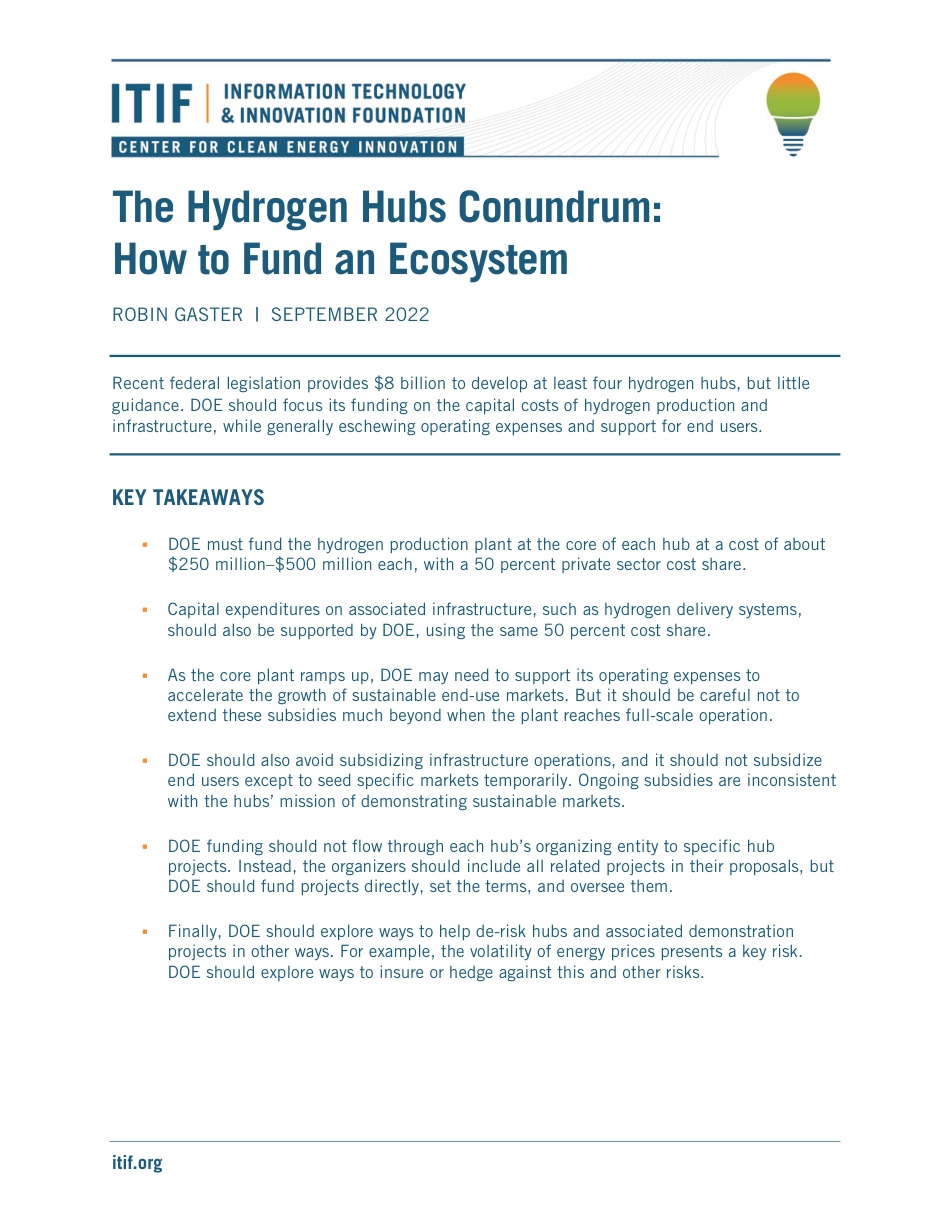itif.org The Hydrogen Hubs Conundrum: How to Fund an Ecosystem ROBIN GASTER | SEPTEMBER 2022 Recent federal legislation provides $8 billion to develop at least four hydrogen hubs, but little guidance. DOE should focus its funding on the capital costs of hydrogen production and infrastructure, while generally eschewing operating expenses and support for end users. KEY TAKEAWAYS ▪ DOE must fund the hydrogen production plant at the core of each hub at a cost of about $250 million–$500 million each, with a 50 percent private sector cost share. ▪ Capital expenditures on associated infrastructure, such as hydrogen delivery systems, should also be supported by DOE, using the same 50 percent cost share. ▪ As the core plant ramps up, DOE may need to support its operating expenses to accelerate the growth of sustainable end-use markets. But it should be careful not to extend these subsidies much beyond when the plant reaches full-scale operation. ▪ DOE should also avoid subsidizing infrastructure operations, and it should not subsidize end users except to seed specific markets temporarily. Ongoing subsidies are inconsistent with the hubs’ mission of demonstrating sustainable markets. ▪ DOE funding should not flow through each hub’s organizing entity to specific hub projects. Instead, the organizers should include all related projects in their proposals, but DOE should fund projects directly, set the terms, and oversee them. ▪ Finally, DOE should explore ways to help de-risk hubs and associated demonstration projects in other ways. For example, the volatility of energy prices presents a key risk. DOE should explore ways to insure or hedge against this and other risks. INFORMATION TECHNOLOGY & INNOVATIO...



